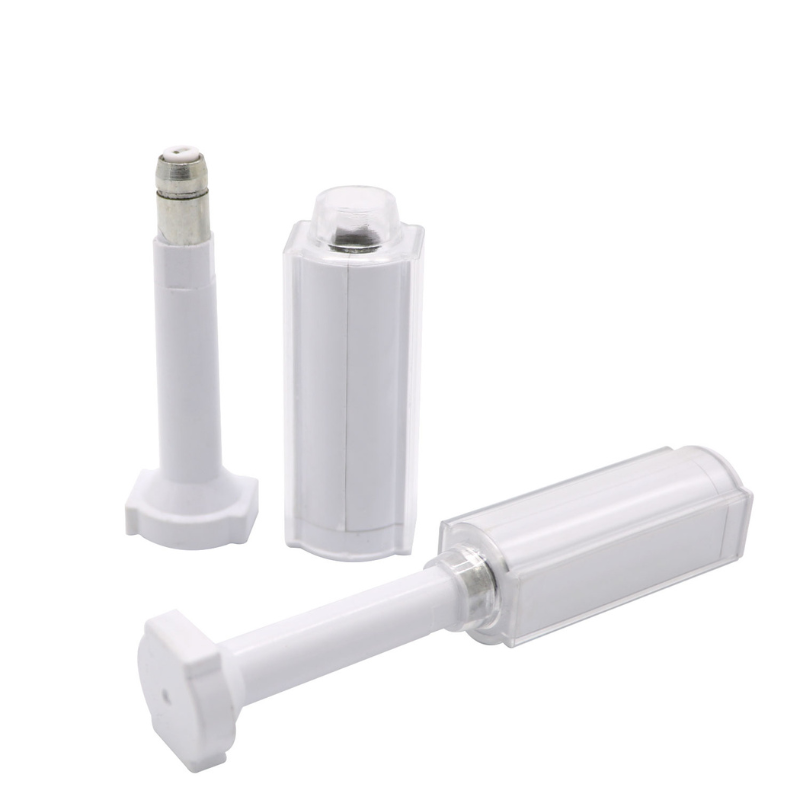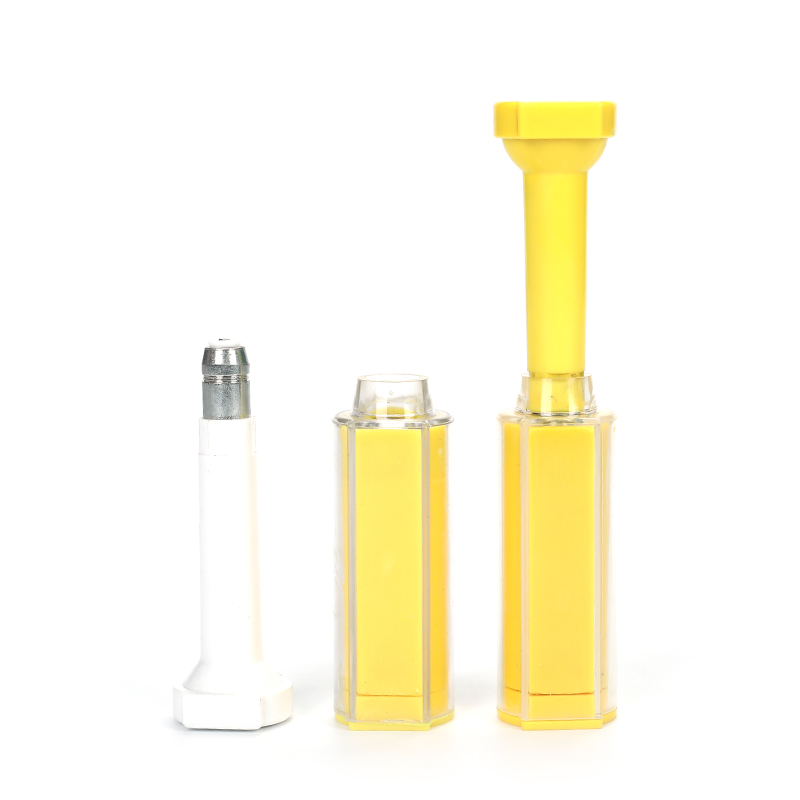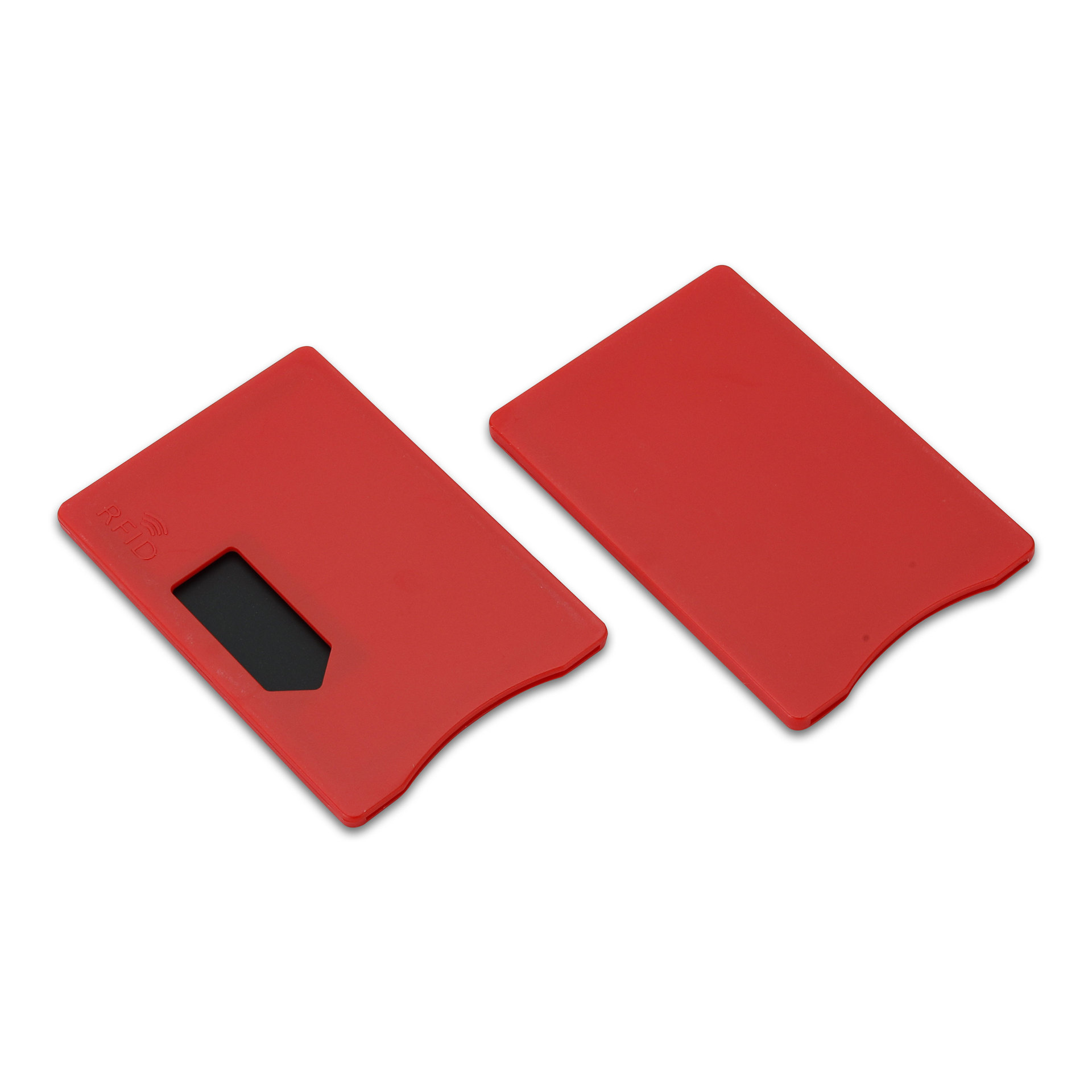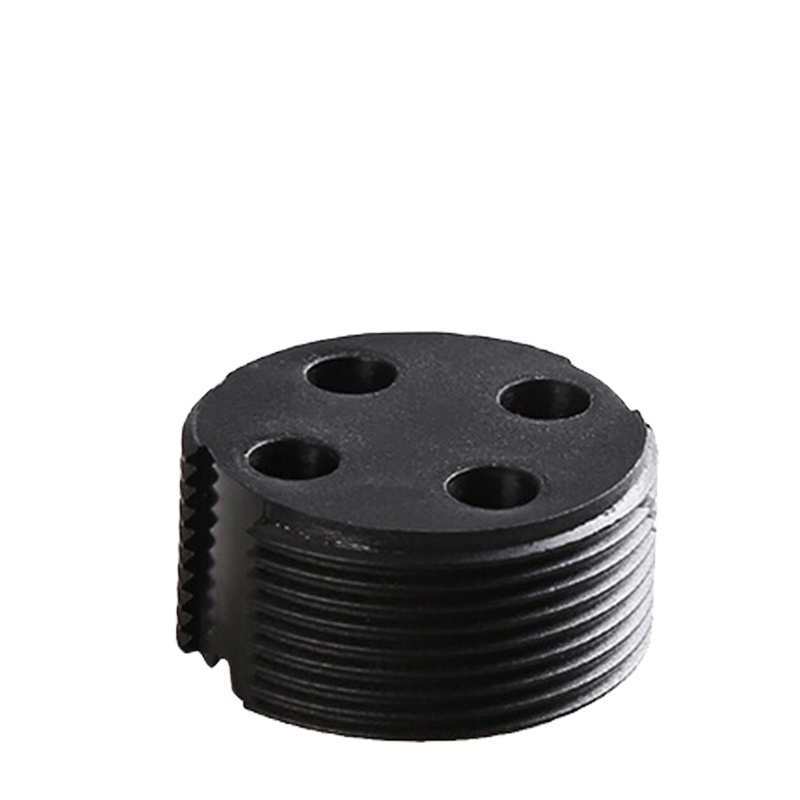
Hoe werken on-metal RFID-tags op metalen oppervlakken?
Inhoudsopgave
RFID-tags op metaal: Hoe ze werken en waarom industriële kopers ze nodig hebben
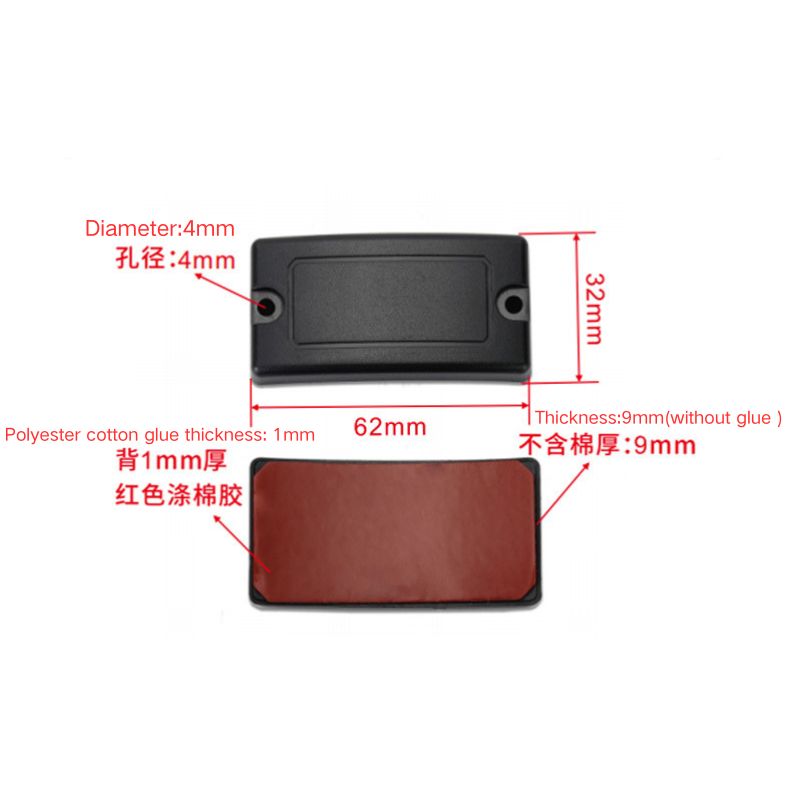
Waarom standaard RFID-tags moeite hebben met metalen oppervlakken
Standaard RFID-tags zijn weliswaar kosteneffectief en worden veel gebruikt, maar zijn niet ontworpen om betrouwbaar te presteren op metalen oppervlakken. Je bent niet de enige die probeert metalen apparatuur, gereedschap of containers te taggen met gewone RFID-tags en daarbij leesproblemen of onregelmatige prestaties ondervindt. Hier wordt uitgelegd waarom dit gebeurt:
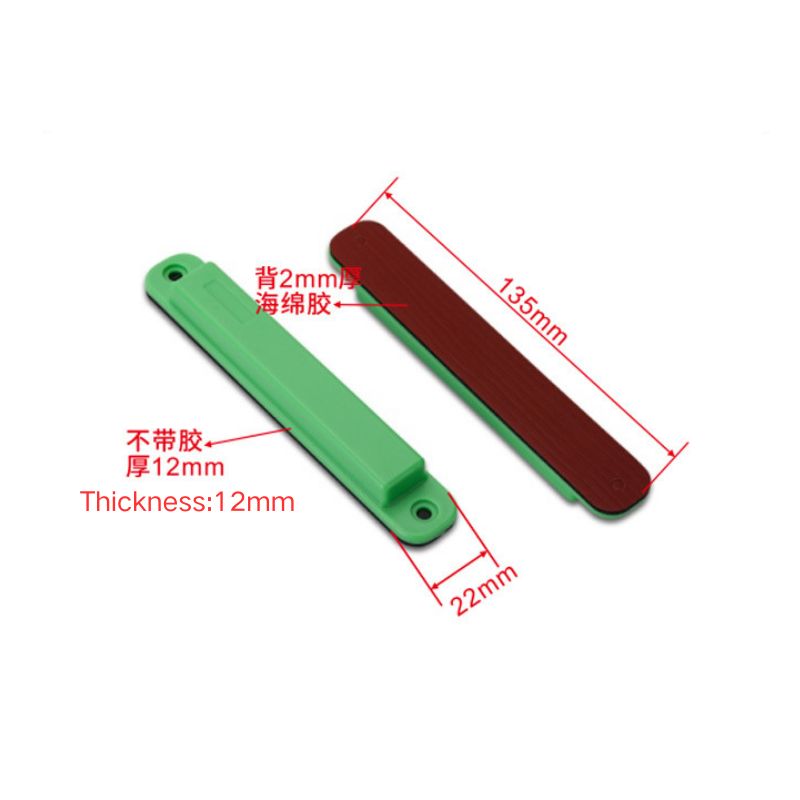
1. Signaalreflectie en interferentie
Radiogolven die worden uitgezonden door een RFID-lezer weerkaatsen op metalen oppervlakken, wat leidt tot multipad-interferentie. Dit betekent dat het signaal onvoorspelbaar verstrooid wordt, waardoor de RFID-lezer in verwarring raakt en het resultaat is:
- Gemiste lezingen
- Dubbele tag leest
- Verminderde leesnauwkeurigheid
Voorbeeld: In een magazijn kan het scannen van een metalen rek met producten resulteren in inconsistente aflezingen als gevolg van signaalreflecties.
2. Antenne afstemmen
RFID-tags bevatten antennes die ontworpen zijn om te resoneren op specifieke frequenties (zoals UHF of HF). Wanneer een tag op metaal wordt geplaatst, verandert het geleidende oppervlak het elektromagnetische veld, waardoor de antenne ontstemt en de tag niet meer werkt.
Dit leidt tot:
- Volledig signaalverlies
- Slechte tag-naar-lezer communicatie
- Sterk verminderd leesbereik
Analogie: Het is alsof je een radio gebruikt die op de verkeerde frequentie is afgestemd - de verbinding werkt niet.
3. Stroomverbruik in passieve tags
Passieve RFID-tags vertrouwen op de energie van het signaal van de RFID-lezer om de chip van stroom te voorzien en gegevens terug te sturen. Maar metalen oppervlakken absorberen of buigen deze energie af, waardoor de tag onvoldoende energie heeft om te functioneren.
Dit resulteert in:
- Tags niet geactiveerd
- Gedeeltelijke gegevensoverdracht
- Kortere levensduur van tags in bedrijfskritische toepassingen
Impact: In industriële omgevingen met grote metalen machines of metalen verpakkingen gaan passieve tags vaak stuk, tenzij ze goed afgeschermd zijn.
4. Inconsistente leeszones
Bij gebruik van standaard RFID-tags in de buurt van of op metaal:
- De leeszone wordt onvoorspelbaar
- Tags werken in sommige posities maar niet in andere
- De betrouwbaarheid van het systeem daalt, waardoor operators gefrustreerd raken en workflows vertraging oplopen
Conclusie: Standaard metalen tags brengen de operationele nauwkeurigheid en ROI in gevaar als je vertrouwt op RFID voor real-time tracking en zichtbaarheid van de inventaris.
Wat zijn RFID-tags op metaal?
On-metal RFID-tags (ook wel anti-metal RFID-tags of metal-mount RFID-tags genoemd) zijn speciaal ontworpen RFID-transponders die zijn ontworpen om effectief te werken op of in de buurt van metalen oppervlakken - iets wat traditionele RFID-tags niet betrouwbaar kunnen.
Deze tags zijn niet zomaar licht aangepaste versies van gewone RFID tags - ze zijn speciaal gemaakt met behulp van geavanceerde materialen en ontwerpstrategieën om metaalstoringen te voorkomen.
Hoe ze gebouwd zijn
Om op metaal te werken, bevatten deze tags:
Isolerende lagen: Scheidt de RFID-antenne en chip van het metalen oppervlak om ontstemming te voorkomen.
Ferrietrug: Een magnetische laag die elektromagnetische velden omleidt, waardoor een zuivere signaaloverdracht mogelijk is.
Geoptimaliseerde antennes: Expliciet ontworpen voor nabije omgevingen met geleidende oppervlakken.
Duurzame behuizingen: Materialen zoals ABS, epoxy of metalen behuizingen beschermen de tag tegen industrieel misbruik, zoals trillingen, stof, olie of vocht.
Deze componenten werken samen om ervoor te zorgen dat de tag betrouwbaar gegevens verzendt, zelfs wanneer deze rechtstreeks op metalen gereedschappen, machines, voertuigen of containers wordt gemonteerd.
Ontwerpvarianten
On-metal RFID-tags zijn er in verschillende vormen en maten om te voldoen aan uw operationele behoeften, waaronder:
- Platte tags voor oppervlaktemontage op metalen planken of containers.
- Gebogen of flexibele tags voor pijpen en cilindrische apparatuur.
- Robuuste munttags voor inbouw in gereedschap of metalen voorwerpen.
- Etiketten met schuimafstand voor kosteneffectieve toepassingen voor eenmalig gebruik.
Bekijk onze volledige Productlijn RFID-tags op metaal
Hoe RFID-tags op metaal werken: Techniek die interferentie overwint
RFID-technologie is gebaseerd op een soepele communicatie tussen een lezer en een tag via radiofrequentiegolven. Deze communicatie wordt echter verstoord wanneer er metaal in de omgeving komt, tenzij de tag speciaal is ontworpen om onder dergelijke omstandigheden te functioneren.
Dat is precies waar metalen RFID-tags voor bedoeld zijn.
De belangrijkste uitdaging: Metaal verstoort elektromagnetische velden
In standaard RFID-systemen resoneert de antenne in de tag op een specifieke frequentie (meestal UHF of HF). Wanneer de tag op metaal wordt geplaatst:
- De resonantiefrequentie van de antenne verandert (ontstemming)
- Het radiosignaal wordt onvoorspelbaar geabsorbeerd of gereflecteerd
- Communicatie tussen de lezer en de tag wordt onstabiel of volledig onderbroken
On-metal RFID-tags gebruiken een meerlagig ontwerp om deze uitdagingen te overwinnen.
Belangrijkste opmerkingen voor standaard RFID-tag en RFID-tag op metaal
| Functie | Standaard RFID-tag | RFID-tag op metaal |
| Werkt op metalen oppervlakken | ❌ Geen of zwak signaal | Ontworpen voor metaal |
| Leesbereik bij metaal | Ernstig verminderd | Tot 10 meter (UHF) |
| Weerstand tegen interferentie | Onbetrouwbaar | ✅ Ferriethoudende afscherming |
| Duurzaamheid in zware omstandigheden | ⚠️ Beperkt | IP67+ gecertificeerde materialen |
Hulp nodig bij het kiezen van de juiste tag?
Het technische team van JIA RFID biedt gratis advies en oplossingen op maat voor industriële klanten. Wij kunnen het perfecte product aanbevelen als u zware machines, containers of apparatuur in ruwe omgevingen wilt volgen.
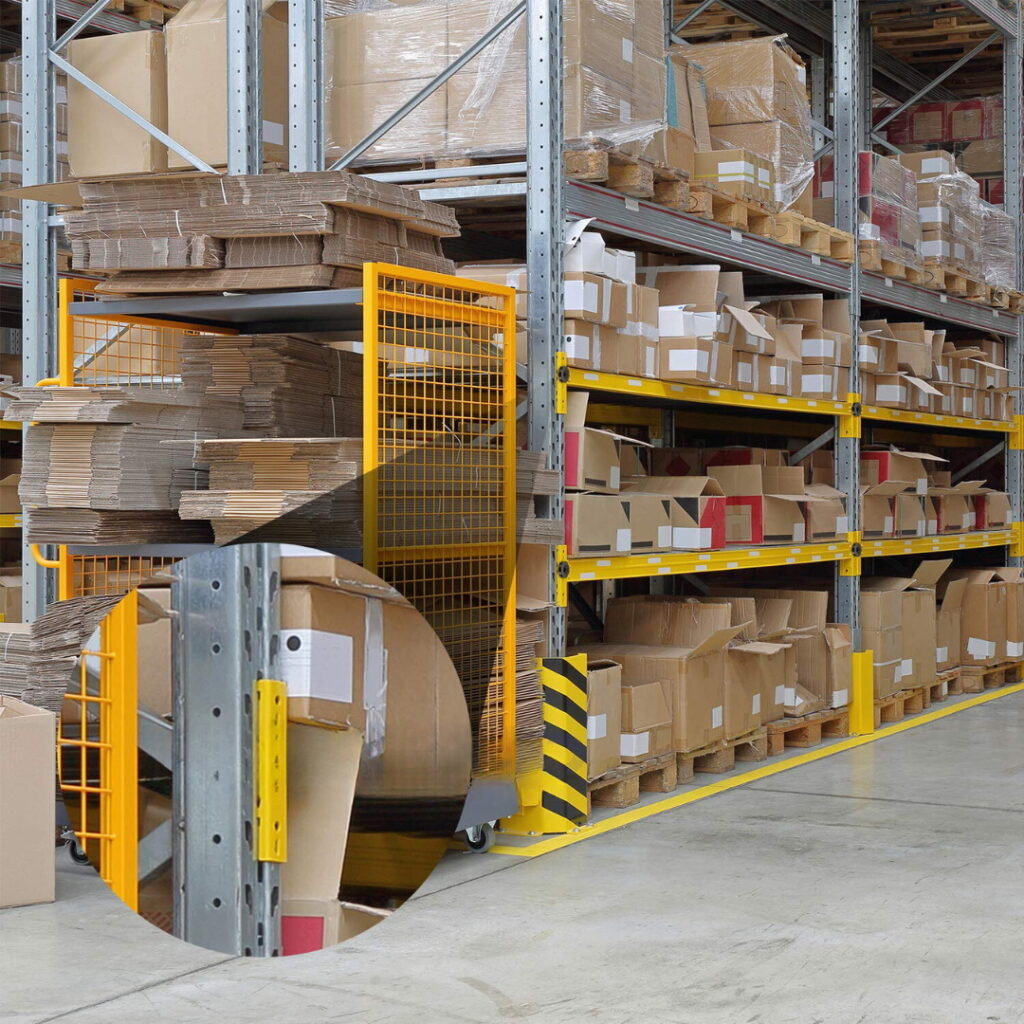
Industriële toepassingen van RFID-tags op metaal
On-metal RFID-tags zijn een game-changer voor industrieën die afhankelijk zijn van metalen gereedschappen, onderdelen, structuren en apparatuur. In tegenstelling tot traditionele tags zijn deze gemaakt voor robuuste, metalen omgevingen waar precisie, duurzaamheid en real-time gegevens essentieel zijn.
Hieronder vindt u de belangrijkste industrieën en toepassingen waar de fabrieksgerichte on-metal tags van JIA RFID de werking verbeteren, kosten besparen en de traceerbaarheid verbeteren.
1. Productie en industriële apparatuur
Gebruiksscenario's:
- Bijhouden van gereedschappen, matrijzen en opspansystemen op de productievloer
- Bewaking van onderhanden werk (WIP) dat van het ene station naar het andere wordt verplaatst
- Metalen machines identificeren voor onderhoudsplanning
Voordeel:
Garandeert de verantwoording van tools, vermindert vertragingen in de productie en ondersteunt preventief onderhoud door real-time zichtbaarheid.
Gerelateerd product: RFID-schijfjes en munttags →
2. Logistiek en opslag
Gebruiksscenario's:
- Beheer van metalen zeecontainers, pallets en kratten.
- Retourzendingen voor transport traceren.
- Automatisch scannen van gate-in/gate-out met handheld lezers.
Voordeel:
Geen handmatig scannen meer, minder verlies van goederen en snellere inventariscontroles dankzij de mogelijkheid om bulk te lezen.
Gerelateerd product: RFID-lezers →
3. Olie & gas
Gebruiksscenario's:
- Metalen buizen, kleppen en flenzen identificeren en traceren
- Controle van booruitrusting op offshore booreilanden
- Inspectie- en certificeringsgegevens bijhouden
Voordeel:
Verbetert de naleving van veiligheidsvoorschriften en de traceerbaarheid van bedrijfsmiddelen in corrosieve omgevingen met hoge temperaturen waar barcodelabels tekortschieten.
Waarom RFID wint: On-metal tags zijn bestand tegen water, druk en chemicaliën die standaard trackinglabels gewoonlijk aantasten.
4. Lucht- en ruimtevaart
Gebruiksscenario's:
- Volgen van vliegtuigonderdelen en structurele componenten
- Gereedschap en kalibratieapparatuur in hangars beheren
- MRO-documentatie (onderhoud, reparatie, revisie) automatiseren
Voordeel:
Verbetert de traceerbaarheid van missiekritieke componenten en vermindert papierwerk en menselijke fouten in veiligheidsgevoelige omgevingen.
Bonus: Metaalveilige RFID-tags voldoen aan de eisen voor de luchtvaart en zijn bestand tegen trillingen en drukschommelingen.
5. Bouw en infrastructuur
Gebruiksscenario's:
Markeren van stalen balken, steigers en metalen bevestigingen
Opsporen van hoogwaardige gereedschappen en mobiele apparatuur
Vastleggen van inspecties op bouwonderdelen
Voordeel:
Vermindert materiaalverlies, voorkomt hamsteren van gereedschap en zorgt ervoor dat de veiligheidsnormen op de locatie worden nageleefd.
6. IT activabeheer & datacenters
Gebruiksscenario's:
Labelen en inventariseren van metalen servers en netwerkapparaten
Beveiligen van back-upschijven, racks en mobiele karren
Audits ondersteunen met handheld RFID scannen
Voordeel:
Versnelt nalevingsrapportage, minimaliseert handmatige fouten en ondersteunt de traceerbaarheid van bedrijfsmiddelen in serverruimtes met een hoge dichtheid.
Verbeteren met: RFID-lezers voor datacenters →
Klaar om metaal op schaal te taggen?
JIA RFID biedt bulkprijzen, samplekits en oplossingen op maat voor jouw toepassing, ongeacht de omstandigheden.
Waarom kopen bij JIA RFID?
Als fabrieksgerichte fabrikant biedt JIA RFID:
- Ondersteuning voor aangepaste ontwerpen voor unieke metalen oppervlakken
- Concurrerende bulkprijzen met snelle levertijden
- Wereldwijde verzending voor B2B-klanten
- Eigen engineering voor gespecialiseerde omgevingen
Ontdek meer soorten RFID-tags:
🔹 RFID Disc & Munt Tags
🔹 Draagbare RFID-lezers
Markeer product: RFID Tag functies op metaal
- Frequentie: UHF (860-960 MHz) of HF-opties
- Leesbereik: Tot 10 meter (UHF)
- IP-classificatie: IP67+ voor industriële omgevingen
- Montageopties: Zelfklevend, schroef, klinknagel
Veelgestelde vragen
Werken RFID-tags echt op metaal?
Ja. On-metal RFID-tags zijn ontworpen om interferentie van metaal op te vangen, waardoor ze ideaal zijn voor het taggen van metalen gereedschap, machines en apparatuur.
Hoeveel kosten metalen RFID-tags?
Prijzen variëren per type en volume. Voor passieve versies beginnen bulkprijzen vanaf $0,50 per tag. Ontvang aangepaste offertes voor uw branche.
Zijn je RFID-tags waterdicht en hittebestendig?
Ja, veel van onze metalen RFID-tags voldoen aan de IP67+-normen en zijn ontworpen voor gebruik in zware industriële omgevingen.
Kan ik ze testen voordat ik ze koop?
Absoluut. We bieden gratis monsters aan voor gekwalificeerde projecten. Neem contact met ons op voor evaluatieondersteuning.
Reacties
Populaire producten

Wat is RFID-afvalbeheer?
Stel je een stad voor waar elke vuilnisbak spreekt – niet letterlijk – maar via een kleine chip die het systeem laat weten wanneer hij vol is, wanneer hij wordt geleegd en waar hij naartoe gaat. Dat is wat RFID-afvalbeheer vandaag de dag doet.

Wat zijn boutafdichtingen en hun toepassingen? | Complete gids
In de wereldwijde handel en logistiek spelen grendelafdichtingen een cruciale rol bij het garanderen van de veiligheid en naleving van de vrachtwetgeving. Deze kleine maar krachtige apparaten zijn ontworpen om zeecontainers, trailers en vrachtdeuren te vergrendelen met een mechanisme dat knoeien onmogelijk maakt.
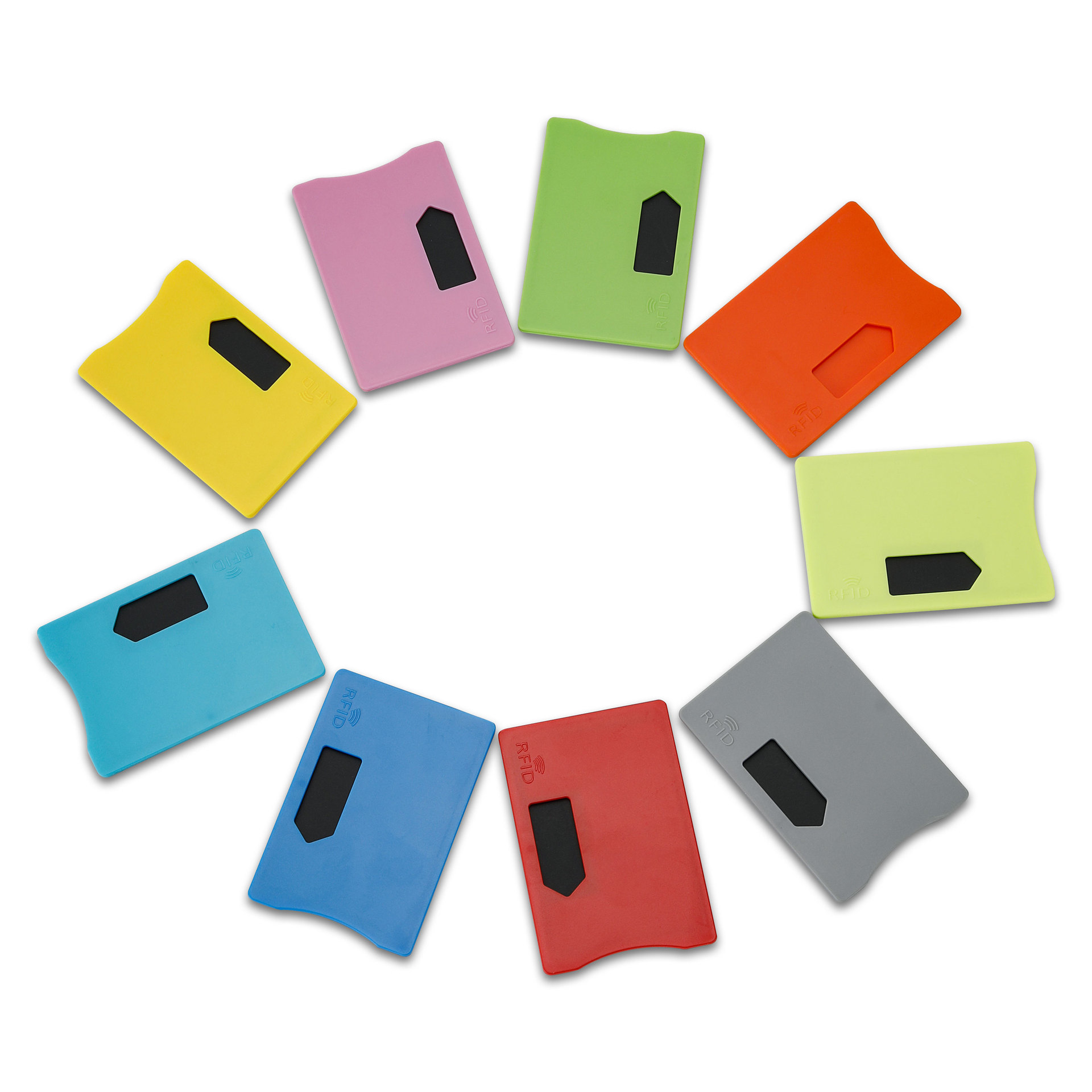
Wat is een RFID-kaartbeschermer? Voordelen, gebruik en koopgids
RFID-technologie (Radio Frequency Identification) is overal: in je creditcards, identiteitskaarten, vervoerspassen, sleutels van hotelkamers en nog veel meer. Het biedt snelheid en gemak, maar het opent ook de deur naar een nieuwe vorm van digitale diefstal die "skimming" wordt genoemd. Dat is waar een RFID kaartbeschermer om de hoek komt kijken.

RFID-polsbandjes voor evenementen: Bulk-inkoopgids voor organisatoren
RFID-polsbandjes voor evenementen worden steeds meer de oplossing voor organisatoren die snellere toegang, fraudepreventie en cashloze betalingen nodig hebben voor concerten, festivals en sportlocaties. In tegenstelling tot papieren tickets of QR-codes gebruiken deze slimme polsbandjes ingebouwde chips om de toegang te stroomlijnen, transacties te beveiligen en de gastervaring te verbeteren.
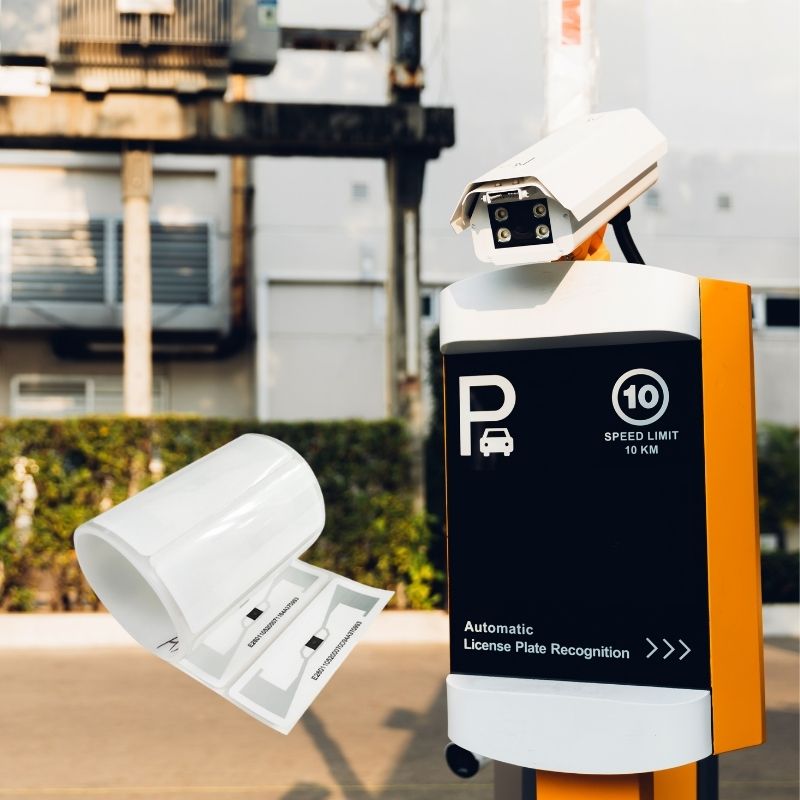
Hoe RFID-tag op voorruit toegangscontrole en tolsystemen voor voertuigen verbetert
In de snelle wereld van vandaag moet voertuigidentificatie snel, veilig en contactloos zijn. Een RFID Tag op de voorruit biedt precies dat - een betrouwbare manier om tolheffing, parkeren en toegangspoorten te beheren zonder voertuigen te stoppen.
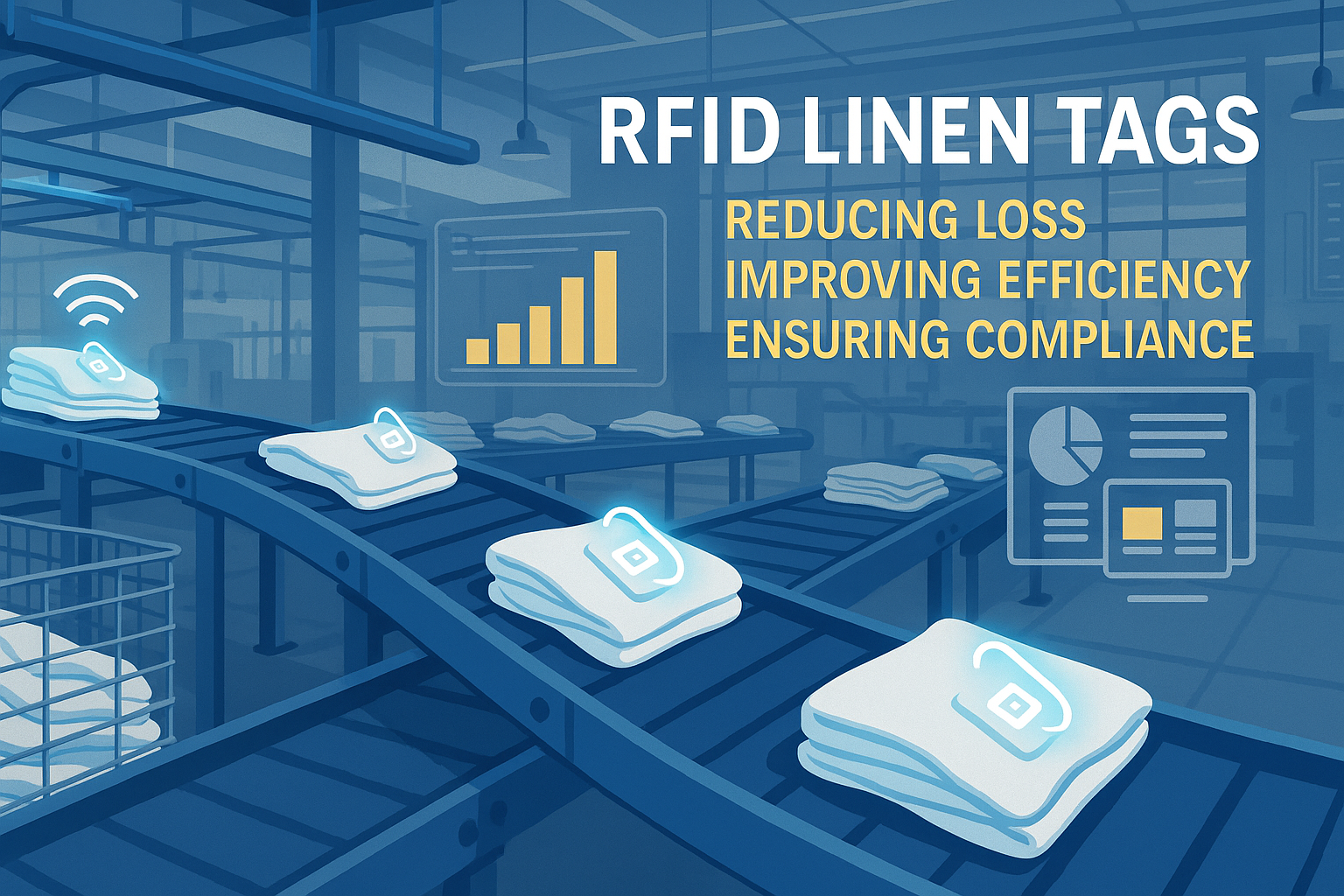
De voordelen van RFID linnen Tags in commerciële wasserijen
De was beheren in ziekenhuizen, hotels of grote wasserijen is een hele klus. Elke dag worden duizenden lakens, handdoeken en uniformen gewassen, gesorteerd en teruggestuurd. Maar problemen zoals verloren linnengoed, sorteerfouten en handmatige telling kunnen bedrijven veel geld kosten. Middelgrote hotels kunnen bijvoorbeeld elk jaar meer dan $200.000 verliezen door zoekgeraakt beddengoed.
Dat is waar RFID Linen Tags van pas komen.
Labels
GERELATEERDE BLOGS

Wat is RFID-afvalbeheer?
Stel je een stad voor waar elke vuilnisbak spreekt – niet letterlijk – maar via een kleine chip die het systeem laat weten wanneer hij vol is, wanneer hij wordt geleegd en waar hij naartoe gaat. Dat is wat RFID-afvalbeheer vandaag de dag doet.

Wat zijn boutafdichtingen en hun toepassingen? | Complete gids
In de wereldwijde handel en logistiek spelen grendelafdichtingen een cruciale rol bij het garanderen van de veiligheid en naleving van de vrachtwetgeving. Deze kleine maar krachtige apparaten zijn ontworpen om zeecontainers, trailers en vrachtdeuren te vergrendelen met een mechanisme dat knoeien onmogelijk maakt.

Wat is een RFID-kaartbeschermer? Voordelen, gebruik en koopgids
RFID-technologie (Radio Frequency Identification) is overal: in je creditcards, identiteitskaarten, vervoerspassen, sleutels van hotelkamers en nog veel meer. Het biedt snelheid en gemak, maar het opent ook de deur naar een nieuwe vorm van digitale diefstal die "skimming" wordt genoemd. Dat is waar een RFID kaartbeschermer om de hoek komt kijken.

